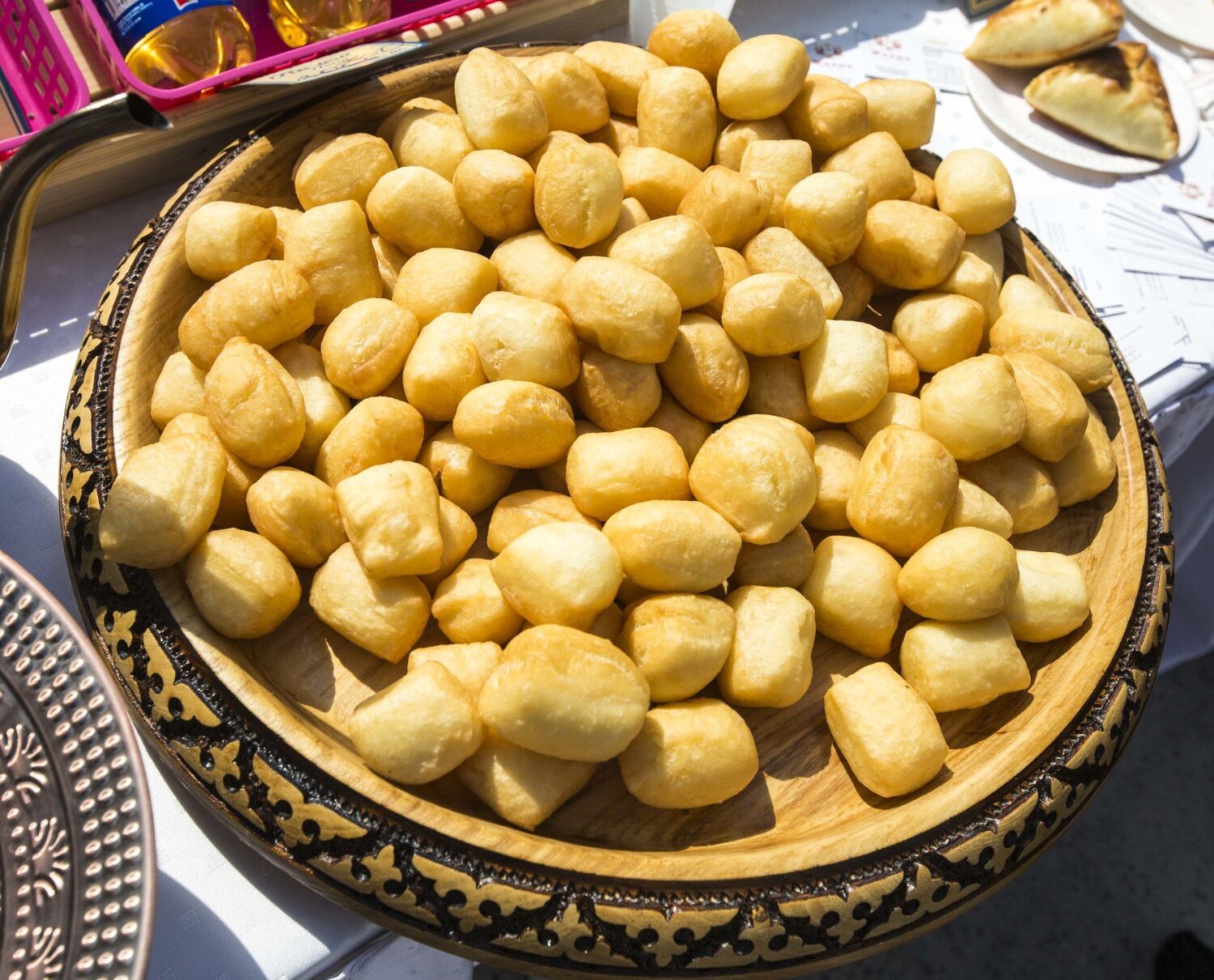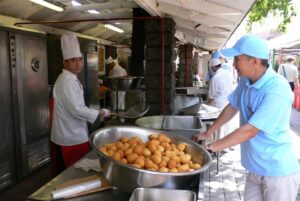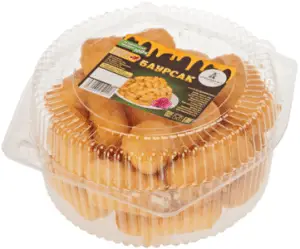Throughout much of Central Asia, one type of bread stands out from all the rest – baursak (баурсак). These small pieces of fried dough are known throughout Central Asia among many of the Turkic and Mongolian-speaking peoples there. In Kazakhstan and Kyrgyzstan especially, they are served as everyday fare accompanied by tea and are staple items on any festive table.
Though they have a wonderful flavor all on their own, baursak are often eaten as a desert topped with sugar, honey, or jam and because of this are sometimes referred to in Kazakhstan as “Kazakh donuts.”
Why It’s Named Baursak
(Почему носит такое название?)
Like much of traditional Central Asian cuisine, baursak, is reflective of the region’s mobile pastoralist roots and people’s lives spent on the move. It is easy to prepare, quick to fry, and keeps longer than baked bread.

Baursak have spread widely as the pastoralists moved and interacted. They are known by many names by the various peoples. Baursak is actually the transliteration from Uzbek to Russian that is most used internationally now. In Kyrgyzstan and Kazakhstan, the name is slightly different: “бауырсак” (although Kazakh spells it with its distinctive “қ” – “бауырсақ”). Meanwhile, the Tatars refer to the food as “бавырсак” and in Mongolian it is “боорцог“.
Baursak is much more than a simple food item, however. It has a rich symbolic meaning in most of these cultures as well.
Many Kazakhs, for instance, will tell you the little ball of baked dough is a symbol of the sun, an image that itself that adorns the Kazakh national flag as a sign of wealth and abundance, life and energy. The rays emanating from the sun depicted on that flag take the shape of individual grains, the primary ingredient of baursak, demonstrating the deep historical connection Kazakhs have to the land and the life-sustaining forces around them.
A life on the move was also one of relative isolation. When the opportunity would arise to entertain guests, it was not something taken lightly. A Kazakh yurt (юрта) – or “киіз үй” in Kazakh which translates to “felt house” – was always a welcoming space to outsiders. Central Asians in general are renowned for their hospitality and traveler accounts from history abound with stories of large feasts, copious amounts of fermented mare’s or camel’s milk – “қымыз” (qymyz) and “шұбат” (shubat), respectively, in Kazakh – and, of course, entertainment when invited in.
A central component of these feasts was the bread, and the word baursak is related to the Kazakh words “бауырмасу“, “бауырласуға“, and “бауыр” meaning roughly “striving for unity,” “kinship,” and “brother.” In this sense, the bread served perhaps above all else to bond the parties together.
Kyrgyzstan, which shares much of its culture and language in common with Kazakhstan can also attest to most of these cultural connections. In many countries as well, this bread has a rich cultural history. Today, no “дастархан“, a word used in Central Asia for the process of sharing a festive meal, is complete without this delicious bread.
How to Eat Baursak
(Как правильно есть баурсак?)
Baursak is a dish that can be enjoyed no matter what the occasion and is readily available at bakeries throughout Kazakhstan and Kyrgyzstan. It also adorns the menus of restaurants specializing in Kazakh or Kyrgyz traditional foods. Although an everyday food, it is also must-have staple for celebratory tables.
It can be eaten as a savory side dish. It accompanies meals and is eaten with main courses, salads, and other sides. It can be eaten plain or a sop for juices or sauces on the plate.
It can also be sweet. It is commonly served as a snack with tea. In this case, the bread may be eaten, again, plain, or sprinkled with powdered sugar (сахарная пудра), or dipped in honey (мед), or jam (варенье). As tea is often drunk after meals in Central Asian cultures, baursak can also thus become dessert at the end of the meal.
How to Properly Prepare Baursak
(Как правильно готовить баурсак?)
As with most dishes in Kazakhstan, Kyrgyzstan, and throughout Central Asia, baursak is subject to slight variations depending on who is making it and for what purpose. One significant factor to consider is whether one wants leavened or unleavened baursak.
Leavened baursak are made with yeast, meaning that they need time to rise and thus take longer to cook. They are also, however a sweater and fluffier product.
Unleavened baursak, prepared without yeast, can be thrown into the oil immediately after kneading and are thus a timesaver. Without the yeast, however, they are denser than their leavened cousins. These recipes almost use kefir in place of the yeast, which makes these slightly more sour-tasting as well
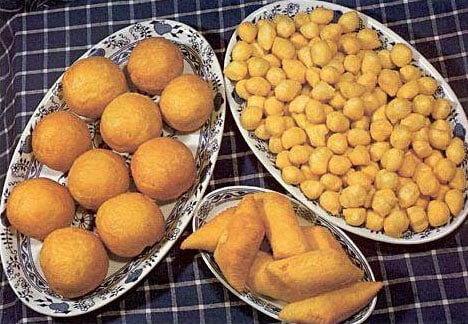
One other factor to consider when preparing baursak is the shape of the finished product. In Kazakhstan, the dough is most often hand-rolled into something resembling a sausage and bits would simply be cut or ripped off the end to be worked into the form of small balls and thrown into the hot oil. In Kyrgyzstan, it is more common to roll the sausage and cut it into diamond shapes. However, nearly any geometric variation is possible: squares, triangles, and disks also abound. In some places, such as Tajikistan, they are also pressed with a pattern by pressing them into a colander before frying. Some cultures make them small, others quite large. Some will additionally sometimes glaze them with honey before serving.
Regardless of shape, size, decoration, or ingredient variations, baursak is a treat all are bound to enjoy.
Let’s Cook!
(Давай Приготовим!)
We have included below two recipes for baursak – one for the leavened variety and one using kefir as a yeast substitute.
| Баурсак | Baursak |
Ингредиенты
1. Вливаем в железную посуду воду и молоко и подогреваем на плите до тепла. 2. Переливаем жидкость в удобную миску для замеса теста, всыпаем дрожжи и добавляем столовую ложку сахара. 3. Всыпаем 1 стакан мука и хорошо перемешиваем. 4. Накрываем миску пищевой пленкой и даем опаре побродить в теплом месте в течение 20-ти минут. 5. Добавляем в тесто соль, взбитое яйцо и сливочное масло. 6. Всыпаем по одной чашке за раз оставшуюся муку и перемешиваем. 7. Когда тесто загустеет, перекладываем его на стол (можно посыпать на стол немного муки) и продолжаем делать замес руками. Вымешиваем тесто в течение 10-ти минут и формируем колобок, накрываем пищевой пленкой и даем подойти в тепло месте в течение часа. 8. Тесто готово — он раскатаем колбасками, а потом режем на небольшие, с грецкий орех, кусочки. 9. Формируем из них шарики, накрываем кухонным полотенцем и оставляем на 15-20 минут, чтобы они подошли. 10. Разогреваем в глубокой сковороде растительное масло и закладываем первую порцию наших шариков. 11. Жарим со всех сторон на среднем огне до румяности и готовности. |
Ingredients
1. Pour the milk and water into a pot and heat on the stove until warm. 2. Transfer the liquid to a mixing bowl, add the yeast and the tablespoon of sugar. 3. Pour in 1 cup of flour and mix well. 4. Cover the bowl with plastic wrap and allow the dough to ferment in a warm place for 20 minutes. 5. Add the salt, beaten egg, and melted butter to the dough. 6. Add the remaining flour one cup at a time. 7. When the dough thickens, put it on the table to continue kneading with your hands (you can sprinkle some flour on the table). Knead the dough for 10 minutes and form it into a bun, cover it with plastic wrap and allow it to rise in a warm place for an hour. 8. The dough is ready – roll it into the form of sausages and then cut it into small pieces the size of walnuts. 9. Form small balls from the pieces, cover them with a kitchen towel and allow them to rise for 15-20 minutes. 10. Heat the vegetable oil in a deep frying pan and add the first batch of small balls. 11. Fry on all sides over medium heat until golden brown and cooked through. |
| Баурсак без Дрожжей | Unlevened Baursak |
Ингредиенты
1. Разбиваем яйца в миске, посолите, и взбиваем их миксером или венчиком, чтобы образовалась пенка. 2. Смешаем соду с кефиром в отдельной миске и подождем, пока в молочном продукте не образуются пузырьки. 3. Добавляем кефир с содой к яичной смеси и перемешаем. В конце влейте растительное масло (20мл). 4. Просеиваем муку через сито и добавляем ее в жидкую основу. Перемешаем до образования плотной структуры. 5. Когда тесто загустеет, перекладываем его на стол (можно посыпать на стол немного муки) и продолжаем делать замес руками. 6. Тесто готово — он раскатаем колбасками, а потом режем на небольшие, с грецкий орех, кусочки. 7. Разогреваем в глубокой сковороде растительное масло и закладываем первую порцию наших шариков. 8. Жарим со всех сторон на среднем огне до румяности и готовности. |
Ingredients
1. Break the eggs in a bowl, add salt, and beat with a mixer or a whisk until foamy. 2. In a separate bowl, mix the soda with kefir and wait until bubbles form in the mixture. 3. Add the kefir and baking soda mix to the egg mixture and stir. Pour in the vegetable oil when finished (20ml). 4. Sift the flour through a sieve and add it to the liquid base. Stir until firm. 5. When the dough thickens, put it on the table to continue kneading with your hands (you can sprinkle some flour on the table). 6. The dough is ready – roll it into the form sausages and then cut it into small pieces the size of walnuts. 7. Heat the vegetable oil in a deep frying pan and add the first batch of small balls. 8. Fry on all sides over medium heat until golden brown and cooked through. |
Borsok – Kyrgyz Version
This fried bread is known as “borsok” in Kyrgyzstan. It is always made in large quantities for special occasions. When guests arrive, the Kyrgyz will cover the surface of a table with borsok, with jams, dried fruit, butter, and/or ayran, a spread similar to cream cheese. Guests can munch on borsok throughout the dinner. The Kyrgyz traditionally cook borsok outside, above a wood (or sometimes dung) burning stove.
The recipie below from Kyrgyzstan was contributed by Genevieve Gunow, an SRAS graduate who married her Kyrgyz fiancée while abroad (read their story here) and so spent her semester also under the tutelage of her future mother-in-law, in a traditional process that is meant to pass down recipes and domestic skills.
| Борзок | Borsok |
Ингредиенты
Приготовление
|
Ingredients
Preparation
|
Our Favorite Baursak Videos
As every good Kazakh cook will tell you, there are several ways to prepare baursak and everyone puts their own twist on the recipe. Here is a quick video from the Kazakh YouTube channel “Дастархан” in which the host, Assel, shares the recipe her babushka passed down to her.
Join Kazakh TV as they explore “Баурсак — символ гостеприимства” (Baursak: A symbol of hospitality) and interview a Kazakh woman – with Russian translations – who discusses the history and significance of the delicious cuisine.
We are back with Kazakh TV as they introduce viewers to the “legend” of the origins of baursak. It is a story of a military cook who, short on supplies, must keep the khan’s men fed so they can remain strong in battle. While there are many stories about the origins of baursak, this one is a particular entertaining and, at around 20 minutes, is an excellent way to practice Russian comprehension!
You Might Also Like
Central Asia’s rich tradition of carpet weaving reflects the region’s history, culture, and identity. From the ancient nomads of the Pazyryk Valley to the artisans of Kyrgyz yurts and the urban weavers of Samarkand, carpets have long served both practical and symbolic functions. Their materials, techniques, and motifs reflect centuries of interaction between nomadic and […] The Talking Phrasebook Series presents useful phrases and words in side-by-side translation and with audio files specifically geared to help students work on listening skills and pronunciation. Below, you will find several useful phrases and words. To the left is the English and to the above right is an English transliteration of the Kyrgyz translation. […] Kyrgyz cuisine reflects the country’s heritage of pastoral nomadism. Life was spent moving livestock from pasture to pasture and living in collapsible, transportable yurts. The livestock themselves were the primary, sustainable food source. Everything else was either gathered from the land or traded for. The Kyrgyz did not engage in intensive settled agriculture until forced […] There are few essential things to know about Kyrgyzstan. One of these is the country’s folkloric hero, Manas. You’ll find nearly everything in Krygyzstan is named after him: the main airport, national parks, major streets in nearly every city and town, and even karate clubs and movie theaters, not to mention the statues of him […] What created Kyrgyz national identity? This is a complex question and one that is personal for each Kyrgyz person. This resource will focus on presenting one element of this identity – the Kyrgyz national narrative. Who are the national heroes and what are the pivotal events that they learned about in school? What are the […]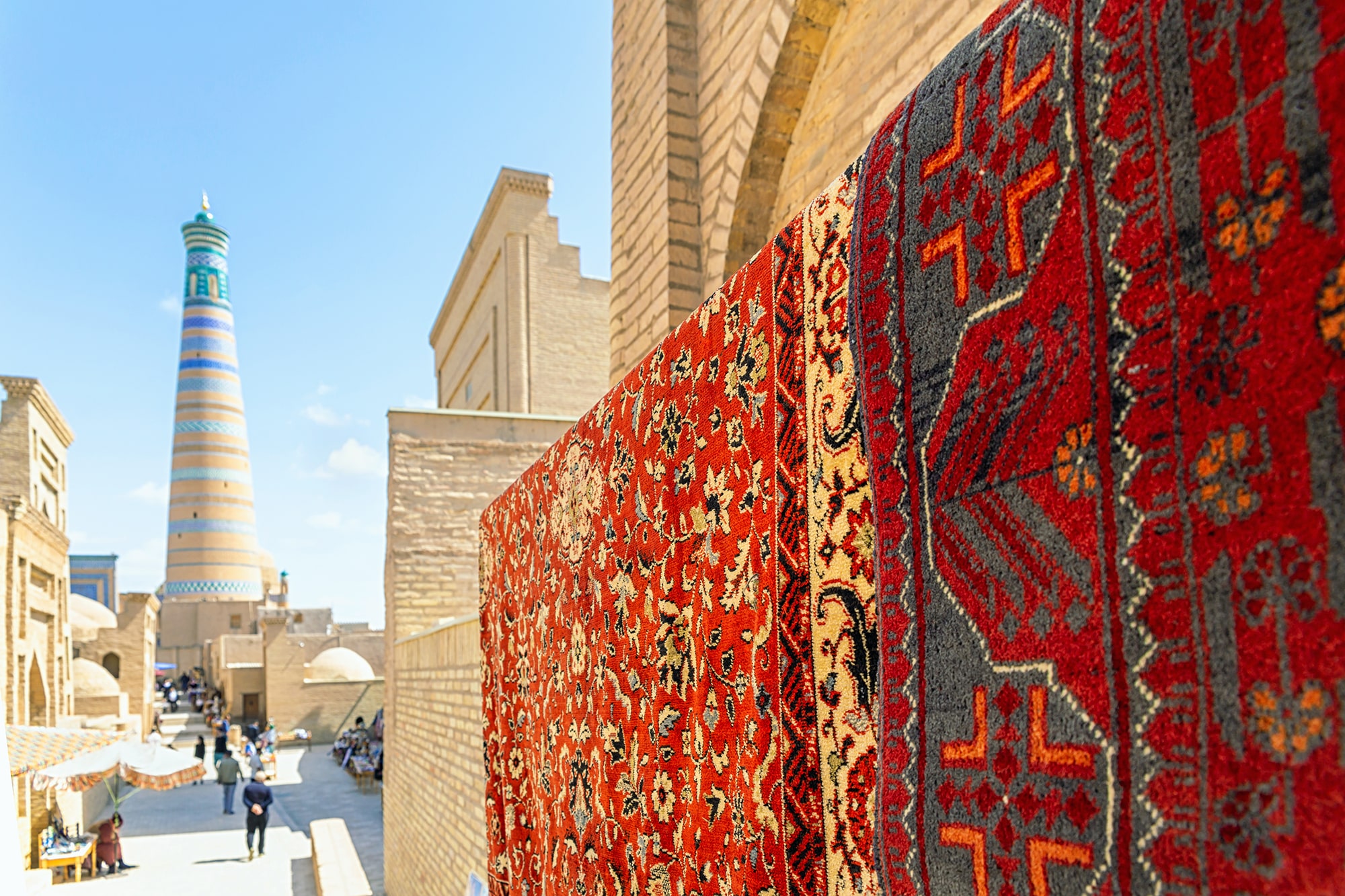
Knots of Culture: Central Asia’s Carpet Weaving Heritage

The Talking Kyrgyz Phrasebook
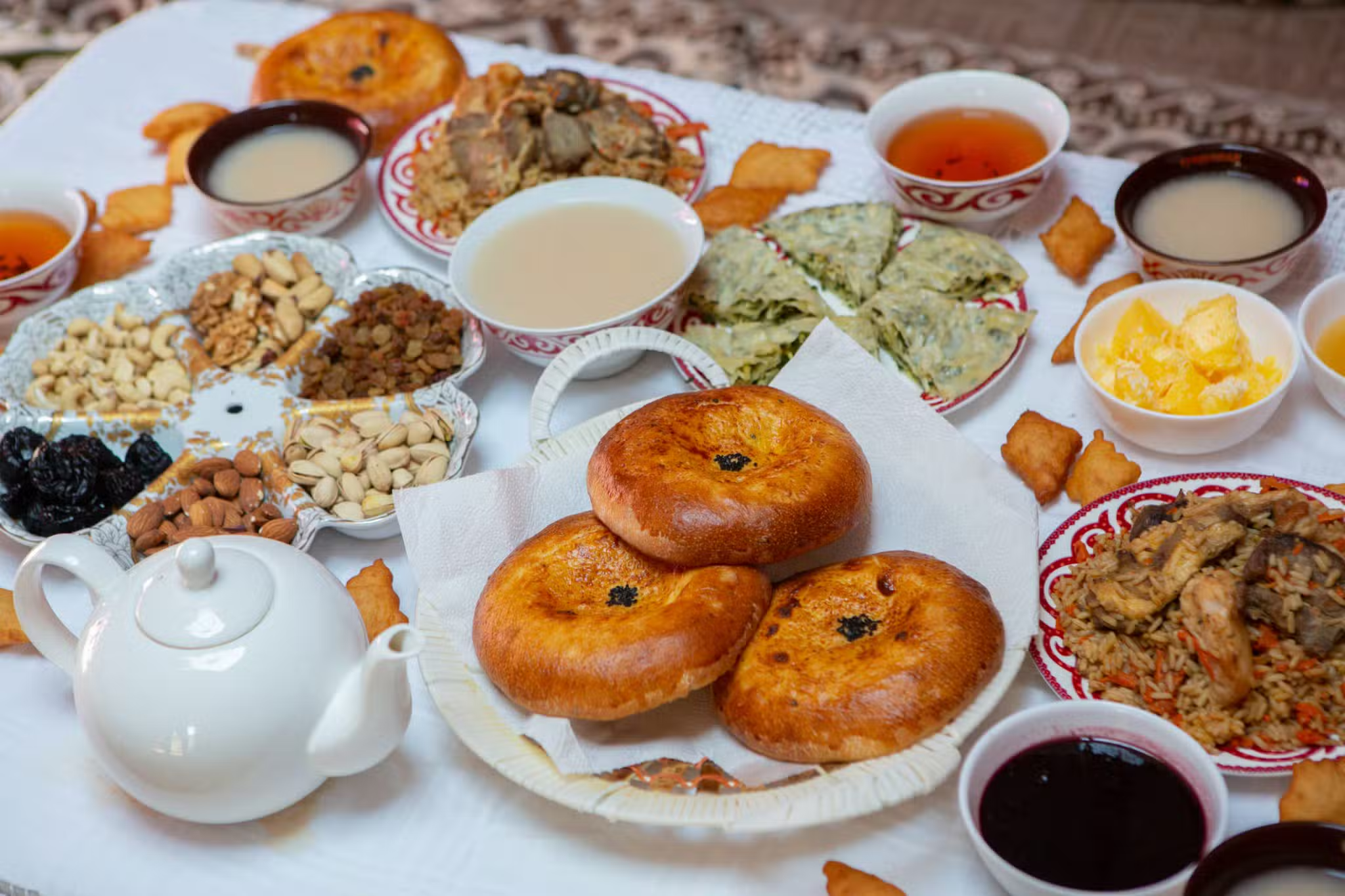
The Kyrgyz Food Dictionary
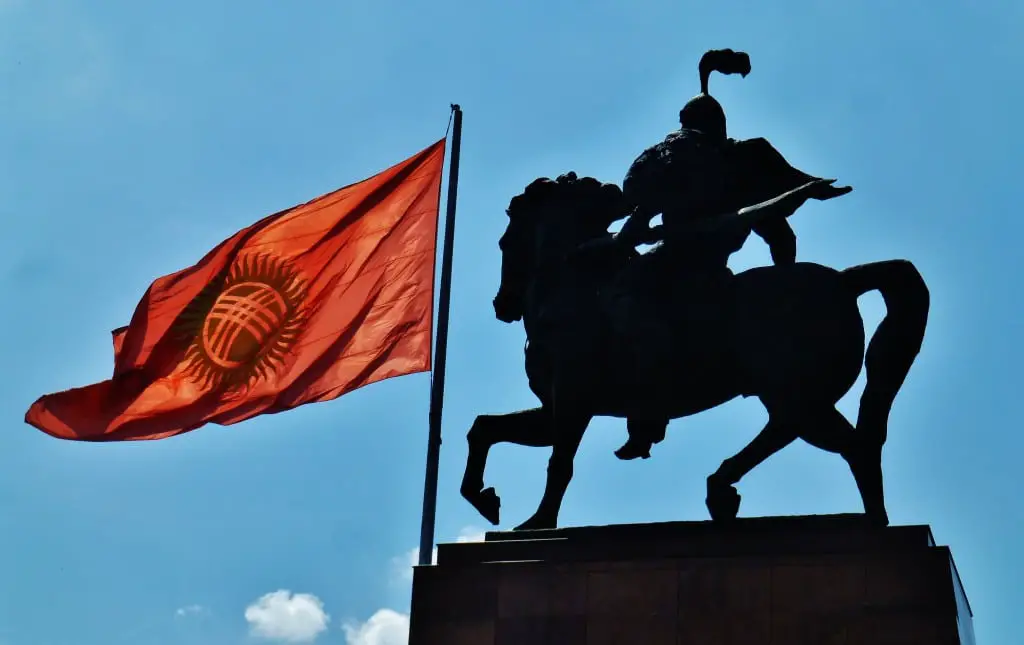
Manas and the Manaschi: Foundations of the Kyrgyz Soul
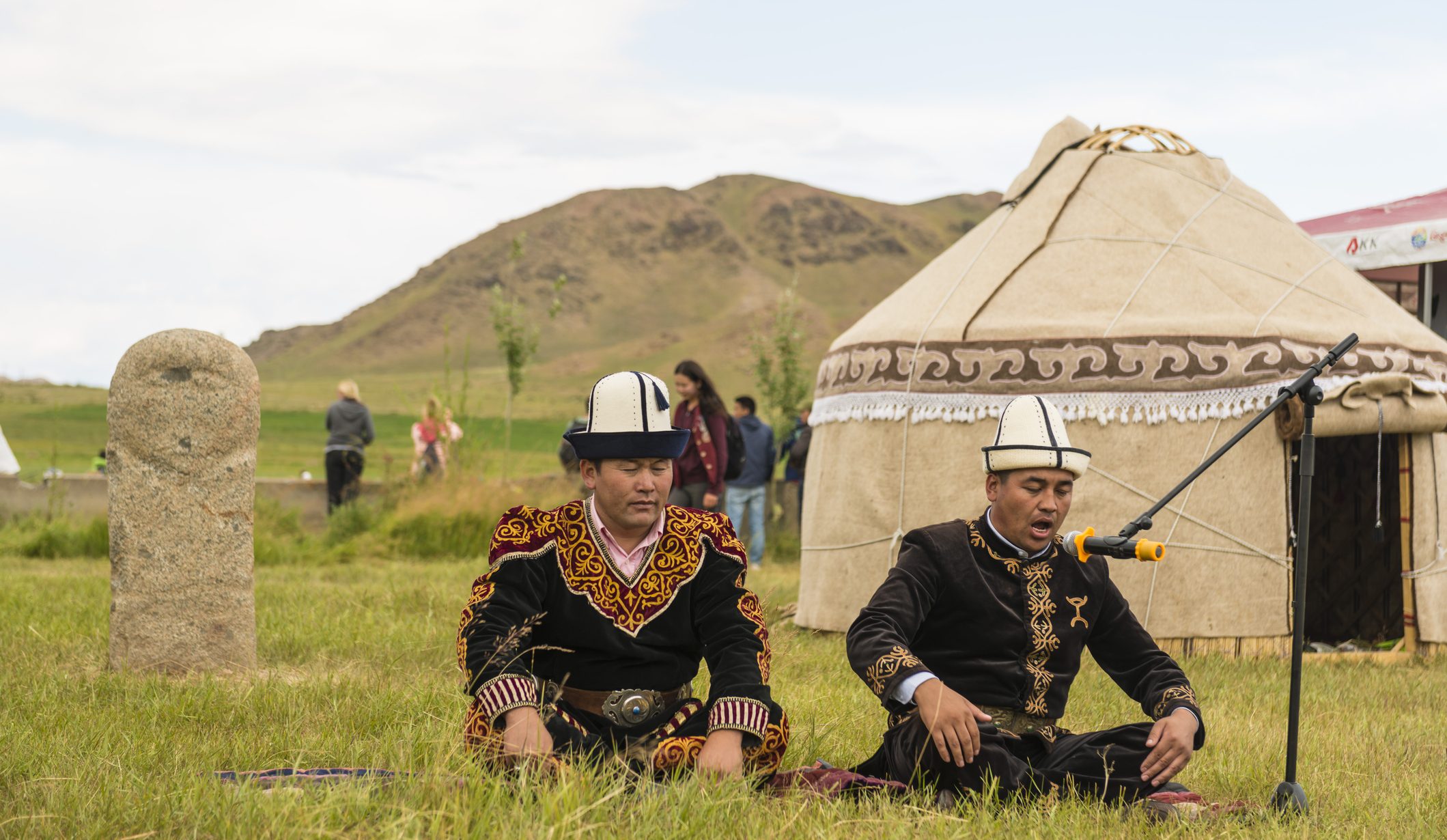
Kyrgyz Identity: Understanding the Kyrgyz National Narrative

